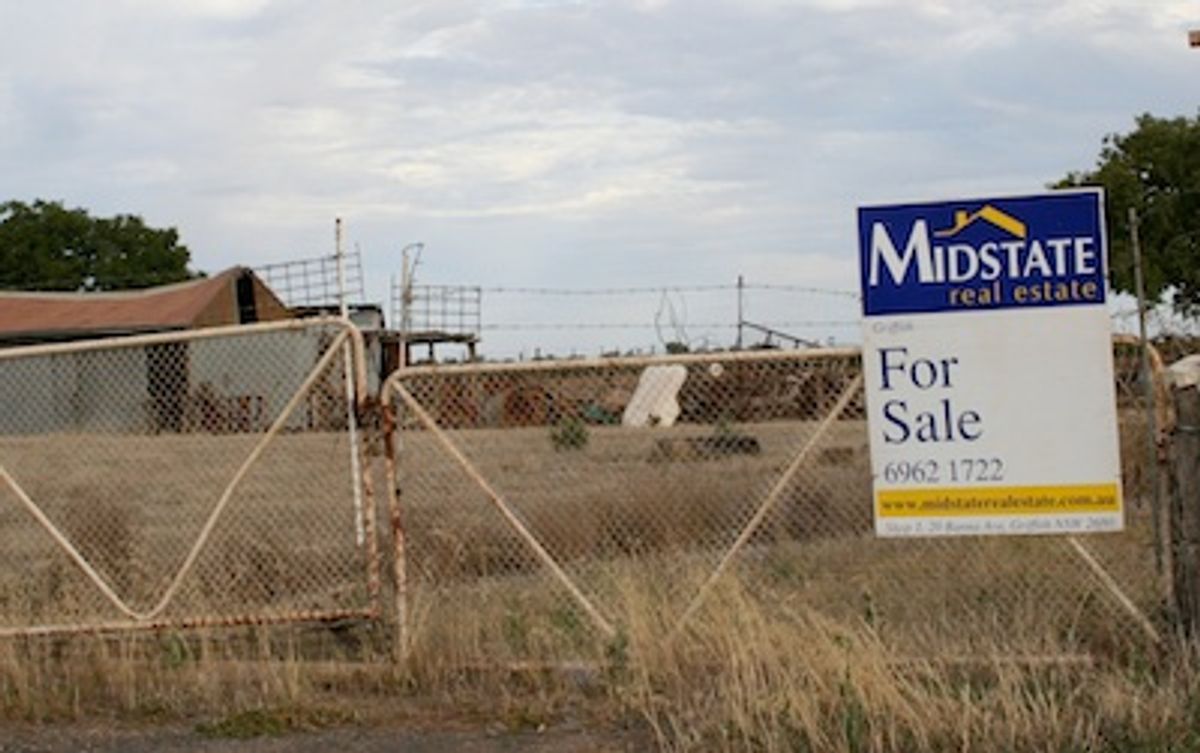Looking out the window of a turboprop bound for Griffith, a farming town of about 24,000 in New South Wales, Australia, I watch the farmland roll by—except there’s nothing there, just a dry, brown expanse. It’s the height of summer, and in a good wet year, these fields would form a verdant patchwork. But there hasn’t been a good year in at least a decade. “It used to be so green here,” sighs Sylvia, my seatmate and a long-time resident of the area.
As we approach Griffith, the view does green up considerably. I spot orchards and vineyards and incredibly lush green plots that must be rice, one of the staple crops around here. Those are irrigated farms, Sylvia explains. For nearly 100 years, a network of canals and channels that draw water from the nearby Murrumbidgee River have made the region one of the country’s most productive. But a decade of drought along with a national policy to restrict water usage throughout Australia’s agricultural heartland are forcing Griffith’s farmers to make hard choices.
On Trevor and Gerardine Hill’s farm southeast of town, they’ve planted 44 of their 412 hectares with long-grain rice and they’re also raising about 300 ewes and lambs. On the gentle slope behind their neat yellow-brick ranch house, they’ve planted native trees, and the front yard is adorned by an impressive rose garden. Gerardine grew up on this farm. In the wetter years, she says, they grew more rice as well as azuki beans and fava beans, and they raised cattle.
Each morning and evening, Trevor inspects the water levels in his rice fields. It may seem counterintuitive to grow such a water-loving crop in such a water-stressed area, but people don’t realize how far that water actually goes, he says. He lets his lambs graze along the banks of the paddies—that way, he doesn’t have to buy feed, and the lambs keep the weeds down. After the rice is harvested, he bails up the stubble and sells it; it’s good roughage for cattle. Then with the water that’s still left in the ground, he’ll plant a crop of oats or barley. “So I use the water four ways,” he says.
Still, the Hills aren’t sure how long they’ll keep at it. Like every farmer in the area, they struggle to stay current with new water policies that limit how much water they’re allocated in a given season. They can also buy and sell water, but there’s a raft of rules and fees attached to water trading, too. One of the goals of Australia’s water market is to compel farmers and other water users to become more efficient. But in practice, fluctuations in water prices can cost a farmer dearly. Trevor is still smarting from a recent purchase that effectively cost him several thousand dollars when the price of water dropped shortly after he bought. “You try to make good decisions, you try to do the right thing, but you never feel like you’re getting all the information you need,” he says.
Farming in Australia has never really been easy, given the huge variability in rainfall and the poor soil in many areas. To be a farmer here you almost have to be an optimist. But in Griffith, there have been a number of suicides in the last few years, and very few younger people are taking up farming. A neighbor of the Hills got so concerned with what he was seeing that he started up what’s effectively a support group for the younger farmers. About once a month, they get together for dinner and a few drinks. “Everybody opens up,” Gerardine says. “It’s been a really positive thing.”
This is his first season with the new irrigators, and McFarlane can’t yet say if the equipment will pay off. “I need someone to tell me: Did I do the right thing?”
Jean Kumagai is the Executive Editor at IEEE Spectrum. She holds a bachelor's degree in science, technology, and society from Stanford University and a master's in journalism from Columbia University.






